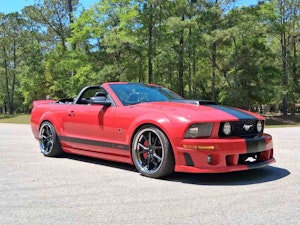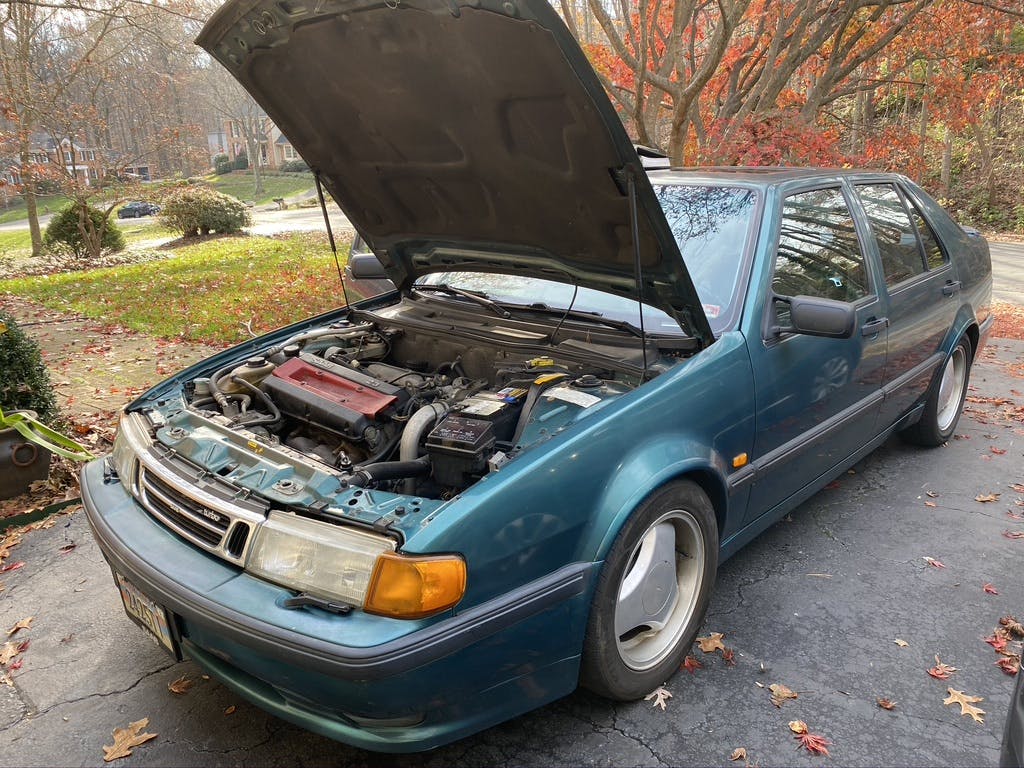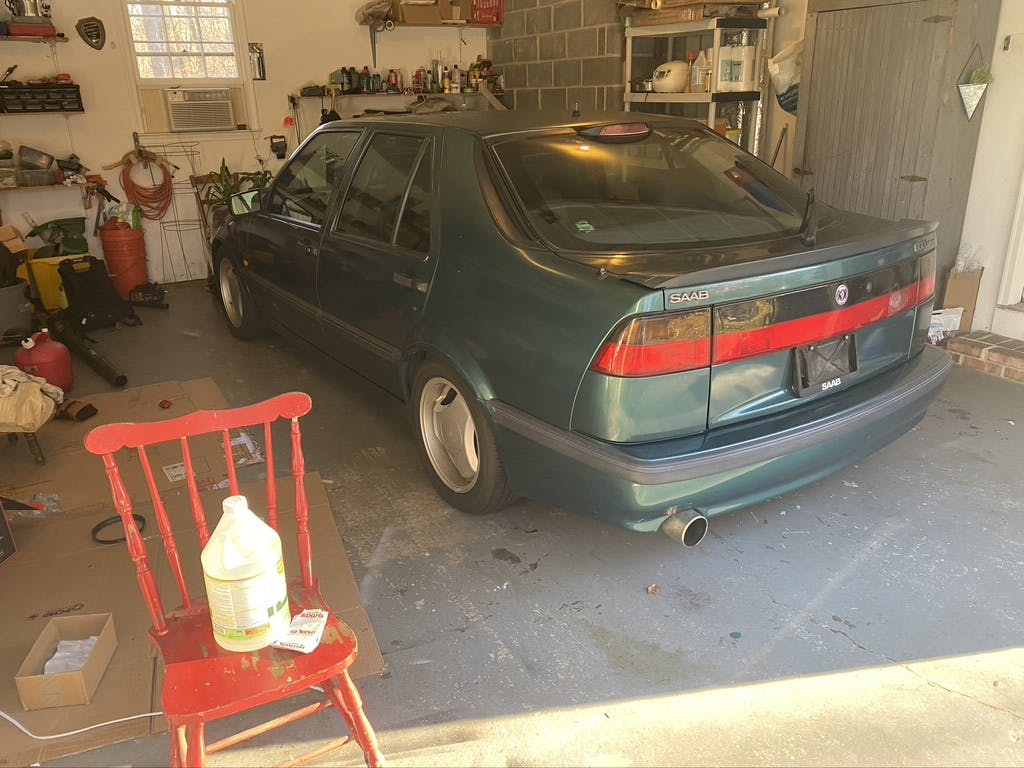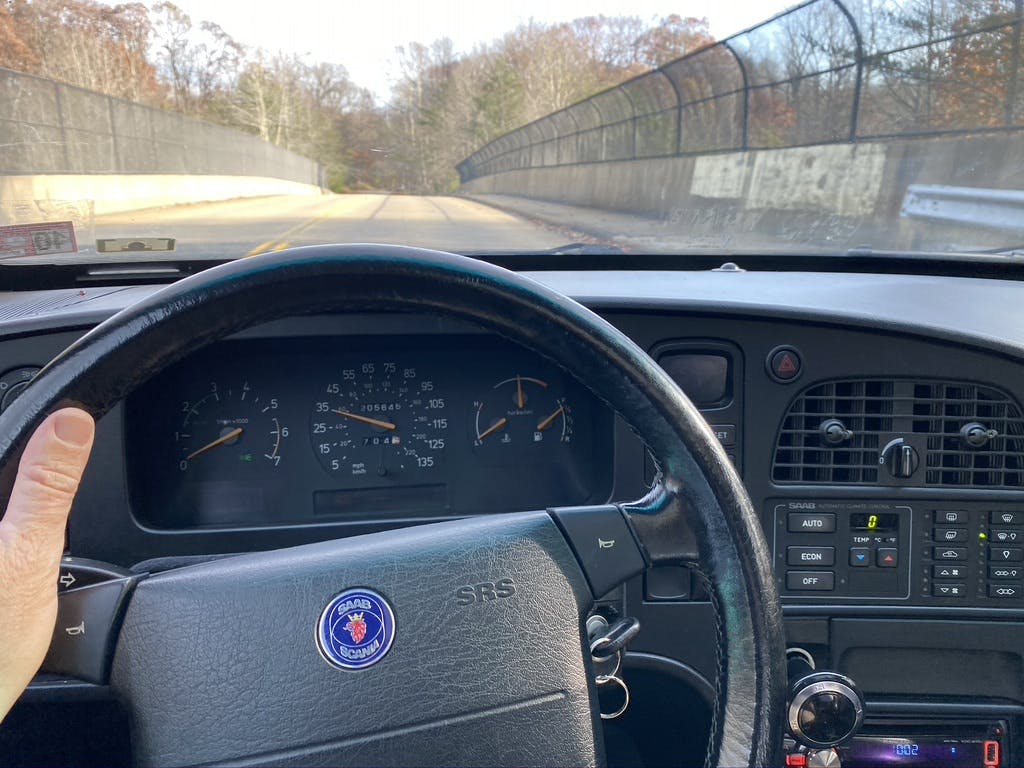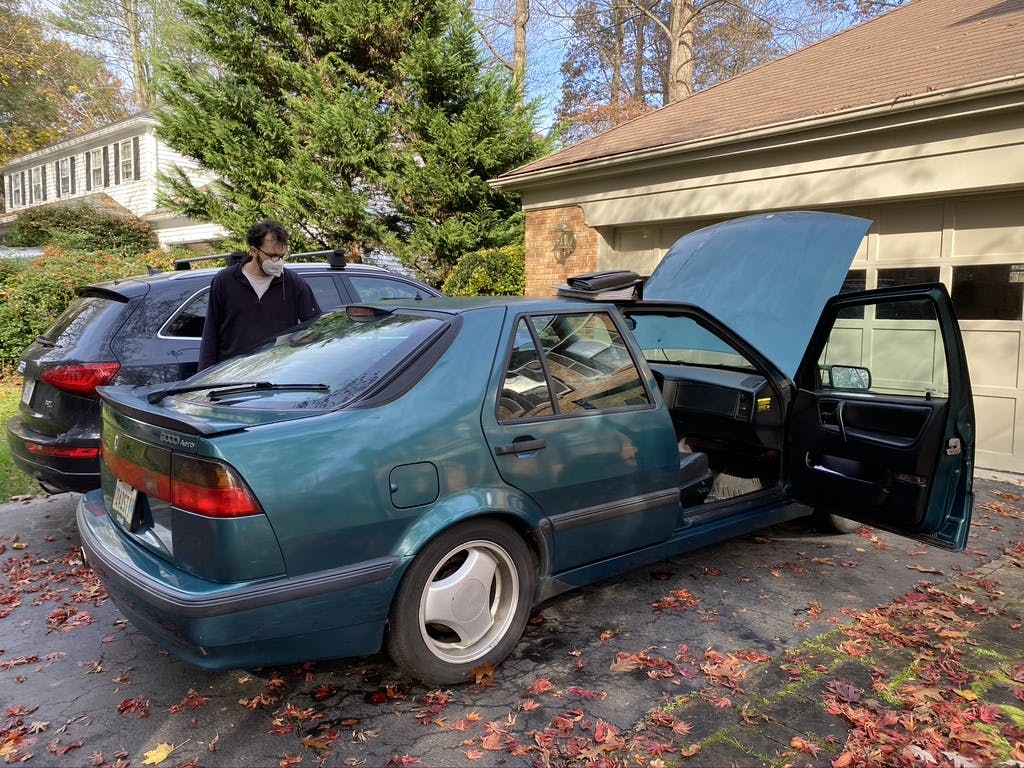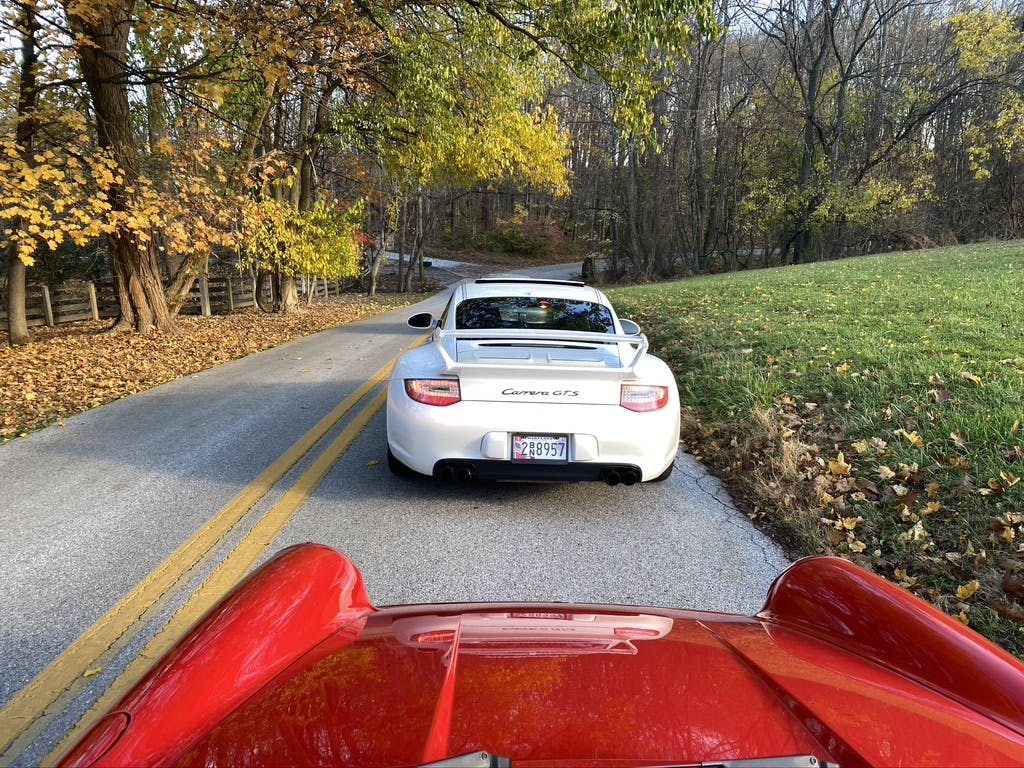Media | Articles
My new low-buck project is this righteous $3250 Saab Aero
Well, it’s been an entire year since my last $3500 car project. What have I been waiting for?
In the spirit of last year’s Super Rad 1991 Pontiac Firebird project, I recently found myself searching for something inexpensive and interesting from the ’80s or ’90s on Craigslist and Facebook Marketplace. With my budget set to a max of four grand and a location within a 150-mile radius of home, my prospects seemed grim—until a 1994 Saab 9000 Aero hit my screen.
Most people know me as a pretty die-hard Porsche 911 and Sunbeam Tiger guy, but Saabs also occupy a special place in my heart. I love the 900-series Turbos, but my real favorite is the last generation of larger 9000s built between 1993 and 1997. I’ve owned two of them previously—a 1993 and a 1996—and, while they were tasked to be daily drivers at the time, I always considered them extra special cars. Beautiful leather seats, sporting suspensions, giant cargo capacity, and so much more. There’s also nothing like the combination of power and economy out of a Saab turbo 2.3 if the vehicle is so righteously equipped. Most are affordable these days, too, since the ravages of time and mechanical neglect have relegated many to the scrapper or a set of backyard cinder blocks. Finding a good one is truly like discovering a needle in a haystack, so let’s just say the grainy advertisement on my computer screen grabbed my attention.
Let’s back up. So why should you care about a 9000 Aero, anyway? Allow me to explain myself, as at this point there may be doubters.
Beginning somewhere along the line in 1993, Saab came out with a special high-output variant of its large 9000 series sedan called the Aero. The standard 2.3-liter turbo was a 200-hp affair, but the Aero got a bump to 225 hp—as long as you selected the five-speed manual option. This was thanks to a higher 1.08 bar (15.6 psi) boost setting for the turbo and some more advanced engine electronics. Combine that with a special Recaro interior, a lowered and sport-tuned suspension, automatic climate control, moonroof, and basically every other available option included, and you had a capable, executive-style, 150-mph highway killer. Magazine tests of the day loved touting that this front-wheel-drive, five-door hatchback could out accelerate a Lamborghini Diablo on a top-gear pull from 50–70 mph, thanks to a torque curve that reached its peak at less than 2000 rpm. The Aero was no slouch from 0–60 either, at a hair over six seconds. It may look like the shipping crate for a Ferrari 308, but the Saab will leave one in the dust, I assure you.
Marketplace
Buy and sell classics with confidence
Before I make contact with any online seller, I usually analyze the ad to get a sense of the sort of ownership the car received. The ad was well-written and full of honest, helpful information. Photographs were decent, but not exactly hi-res since this was, after all, Craigslist. I could get a sense that the owner of the car was a hands-on enthusiast of sorts and wasn’t just flipping it. So far, so good. It had a few engine mods noted—uh, what exactly is a “Stage 3 Tune”?
Okay, back to the car in the ad. A little more research showed me that the color, Eucalyptus Green, was only available on the early Aero models. Nice. You could tell the paint wasn’t perfect, and this is one of those areas in which I just don’t trust photographs. Pictures tell different stories based on the angle of the light on a car, the time of day, and even the pixel density of the photograph; there’s simply no replacement for a live inspection. I also noticed that it had the special Aero-only wheels, which were a massive 6.5 inches wide and 16 inches in diameter. Okay, that’s not much these days, but in the mid ’90s, the exponential growth in wheel size was a few years off. Original is original, and having the right stuff is key to me.
Just like with the Firebird, I was also looking for a relatively clean driver and passenger space. Thanks to a limited parts supply, the devil is in the details with the 9000 interior bits. While the correct and unobtainable Recaro seats remained, the leather looked pretty tired. I was also disappointed to see that the original radio and some knobs were missing from the dash. Still, this Aero seemed to be worth a look. And let’s be honest, this car has a shade over 205K miles on it, so what was I expecting? Yes, TWO HUNDRED AND FIVE THOUSAND MILES. While not in terrible shape, we were way off from “garage queen” or “cream puff” territory here. Throw that in with the engine mods, and I felt like there was going to be a little room for reasonable negotiation on the price … should we get that far.
I was heading towards Washington D.C. that upcoming Saturday anyway for my local Porsche Club regional driving tour, so my goal was to leave extra early and check the car out in person beforehand. I made contact with the owner, and through a series of brief text messages I had an appointment to see the car. Just as importantly, I determined that I was not dealing with an insane person. Fantastic.
Fast forward to about 9:00 am on Inspection Day. I rolled up uneventfully in the ’87 Carrera and There. Was. The. Aero. I tried to play it cool, but I doubt I was pulling it off.
The bad news? That paint was indeed pretty shot. Peeling clearcoat, lots of rough spots, a few dingers on the doors, curb rash on the wheels, and that was just what I noticed at first glance. Even so, I was prepared for that, and the car certainly wasn’t misrepresented as perfect, so there you go. Tires front and rear were mismatched and had different date codes, so I’d probably address that with a fresh set of performance Michelins before any real road work.
The good news? Literally everything else. The car was a very operable machine that saw fairly regular pleasure use, and while the leather was tired it looked like some simple conditioning would go a long way towards resurrection. There was no evidence of this ever being a smoker’s car, and everything seemed to work—including that giant sunroof. Want to know something else that made me feel really good here? The owner was as nice a guy in person as he had been over text, and after a few minutes simply threw me the keys in a socially distanced fashion and said, “Go anywhere you want, let me know what you think.” He may have considered my Carrera parked in front of his house as some kind of security deposit, but fortunately we didn’t have to test that theory.
I fired up the car and, despite its larger-than-stock exhaust, there was no unseemly racket. Maybe a little extra thrum, but nothing major. I noticed the tachometer stayed at zero, so I sort of filed that information away as I fiddled with the seat adjustments, mirrors, and climate control functions. It was such a wonderfully familiar space; I have to admit I was getting all the feels here. Clutch take-up felt normal. As one does with Saabs to engage reverse, you pull up on the little collar around the shift knob, then it’s all the way over and down. Backing out of the relatively steep driveway, I wound around the neighborhood, knowing that nearby was a turnpike with a 55-mph limit, so I could actually get a little run out of it through the gears if traffic were light.
Pulling out from a dead stop and turning right, here’s where the nature of this “Stage 3 Tune” became apparent! Even though I was respecting a barely warm engine, this non-traction-control-equipped turbocharged devil certainly wanted to light up those front tires! You could pretty much haze them through the first couple of gears by just easing the boost gauge to the right of center, and I’m pretty sure third wouldn’t be a problem either if driven more aggressively. I drove around for about ten minutes trying to see how it reacted to various steering and braking inputs, listening for strange noises, and making mental notes such as do all these shift linkages feel this dodgy, or is something broken here? (It’s the former.)
I went back to the owner’s house and asked a few more questions, including specifics about that Stage 3 tune. Turns out he had sent the ECU to a reputable Saab tuning specialist to be reprogrammed, and with the 3-inch downpipe and exhaust, this Swedish meatball was rolling with around 280 horsepower! Yep, that would break those crispy Hankooks loose. I promised to do a little more research and get back to him, and off I went to my PCA tour.
Yet again risking 20 years of marital harmony, I gleefully agreed to buy the Saab a couple of days later. The owner was willing to negotiate another $500 off the asking price, which was fair to both of us, so there’s that too. Who doesn’t like a little negotiation in these matters? A quick trip back to D.C. with a rented trailer and the car was actually in my possession.
For the first time in my life, I went ahead and dropped it immediately at a specialist for a full inspection. This is occurring as we speak at one of my favorite Saab shops up in Wilmington, Delaware, called Sports Car Service. I actually bought my very first Saab from them back in the mid-’90s and I’ve never forgotten how much they love keeping these icons on the road. I hope to hear shortly about the health of my Aero in every way, which will help me prioritize the work it may need once I get it home. They also have a storehouse of interior doodads, so I can correct some things that will bug me. It’s tough having automotive OCD at this financial level!
So, what am I hoping for out of this project? Appearance-wise, I want to improve the paint through some careful attention, saving as much of that original Eucalyptus Green as I can. I’ve seen wonders worked in this regard, so we’ll see what I can accomplish with some of the good stuff from Griot’s. Same for the leather, interior trim, and scuffed wheels. As to performance, new tires are in short order, and I’m guessing new shift bushings and tachometer sorting will be on that first shortlist. This will join some of the other Road Trip Weapons hanging around here, and I plan to give the Aero a lot of use on weekends and tours. Maybe I’ll even put it on our Hagerty DriveShare platform to spread the Saab love, too. Who’s first?




